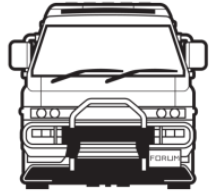Foundmine
Member
I'm replacing my fuel filter as it is time for my second oil change since I purchased my van a little under a year ago. My van is a '96 L400 Exceed, and its got a dual battery setup that looks stock. I was able to get the batteries out without removing the intercooler, and I had hoped that the fuel filter would then be accessible. Unfortunately, it looks caged in by the hard/soft fuel lines and the filler neck (or what I hope is only the filler neck) for the window washer fluid. Also, the expansion tank looks really close to the washer fluid filler neck, and might be in the way even if I get the filler neck out. Questions below:
- How much more of
this crapthese performance mini-van parts do I need to remove for a wear item that needs to be replaced every other oil change? Just the rubber fuel lines? Removal looks tight even if I get those off. Does the washer fluid filler neck come out easily? Or is it attached to the washer fluid reservoir? - My rubber fuel lines are pretty rigid, and each is encased in a clear plastic sleeve that feels a little brittle. Does this sound like OEM parts? The "clear" plastic is a little discolored and a little brittle, but not that bad. It's not new, but it doesn't feel like 25+ year old plastic. If I am going to replace the fuel lines, what should I use (lines rated for pressure or not?) and should I get some oversized clear PVC to protect the lines?
- Before I go destroying 25+ year old plastic bits, does the water separator just twist off?
- If I introduce air into every part of the system, as I assume I will, will button pump on the top of the filter housing be sufficient to prime/purge the system after I put everything back together, or do I have to prime the system with the injector side of the fuel lines disconnected?
- Are you guys really doing this every other oil change? Or did I misread a maintenance schedule somewhere?



